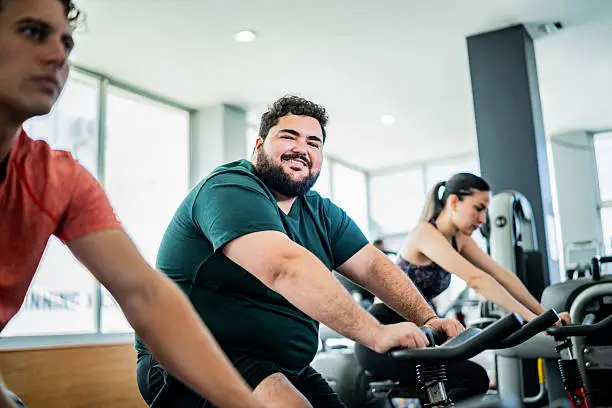Pregnancy is a magical yet challenging time for many women. As your body transforms to nurture new life, staying active becomes both an opportunity and a responsibility. Exercise during pregnancy offers countless benefits — it keeps you strong, boosts your mood, reduces pregnancy-related discomfort, and can even make labor easier. But it’s essential to approach prenatal workouts with care, ensuring the safety of both you and your baby.
This comprehensive guide will walk you through everything you need to know about exercising safely during pregnancy — from why prenatal fitness matters, to trimester-specific workouts, safety tips, and expert advice. Whether you’re a fitness enthusiast or a beginner, this article will help you navigate prenatal workouts with confidence and ease.
🌟 Why Exercise Is So Important During Pregnancy
Physical Health Benefits for Mom
When you’re pregnant, your body is going through enormous physical changes. Regular exercise helps:
- Strengthen the heart and lungs: Pregnancy increases blood volume and puts more demand on your cardiovascular system. Exercise supports this extra workload, improving circulation and stamina.
- Build muscular strength and endurance: This supports your posture and helps you carry the growing baby bump more comfortably, easing back and joint pain.
- Maintain healthy weight gain: Staying active can help regulate weight gain within recommended limits, reducing risks like gestational diabetes and preeclampsia.
- Improve balance and flexibility: As your center of gravity shifts, improving balance is crucial to prevent falls.
- Enhance digestion and reduce constipation: Movement stimulates your digestive system, alleviating common pregnancy complaints.
Mental and Emotional Health Boosts
Pregnancy can come with mood swings, anxiety, and stress. Exercise helps by:
- Releasing endorphins: These natural “feel-good” hormones can reduce stress and lift your mood.
- Improving sleep quality: Many women struggle with pregnancy-related insomnia; physical activity promotes deeper, more restful sleep.
- Reducing symptoms of prenatal depression: Exercise has been shown to lower risks of depression and anxiety during pregnancy.
- Building confidence and body positivity: Staying active helps you feel empowered in your changing body.
Benefits for Baby
A healthy, active mom means a healthy baby. Exercise helps by:
- Improving blood flow to the placenta: This ensures your baby receives adequate oxygen and nutrients.
- Promoting healthy birth weight: Babies born to active moms are less likely to be under- or overweight.
- Possibly enhancing fetal brain development: Some research suggests maternal exercise supports baby’s neurological growth.
- Helping labor and delivery: Moms who exercise often experience shorter labors and fewer complications.
🛑 Prenatal Exercise Safety: Essential Guidelines
Get Medical Clearance
Before starting or continuing any exercise routine during pregnancy, always consult your healthcare provider. This step is crucial, especially if you have:
- High blood pressure or heart conditions
- History of preterm labor
- Placenta previa or other pregnancy complications
- Multiple pregnancies (twins, triplets, etc.)
- Severe anemia or any other chronic illness
Your doctor can advise on what types and intensities of exercise are safe for your individual situation.
Listen to Your Body’s Signals
Pregnancy isn’t the time for a “no pain, no gain” mentality. Pay close attention to signs that mean you should stop immediately:
- Vaginal bleeding or fluid leakage
- Sudden or persistent abdominal pain or cramping
- Dizziness or faintness
- Severe shortness of breath or chest pain
- Rapid heartbeat or palpitations
- Swelling or pain in your calves (could indicate blood clots)
- Decreased fetal movement
If you experience any of these, stop exercising and seek medical attention.
Avoid High-Risk Activities
Certain activities pose risks to mom and baby and should be avoided:
- Contact sports (e.g., soccer, basketball)
- High-impact activities with jumping or jarring motions
- Scuba diving or activities involving pressure changes
- Exercises that require lying flat on your back after the first trimester (can reduce blood flow to the uterus)
- Hot yoga or exercising in extreme heat, which can cause overheating
🏋️♀️ Best Prenatal Exercises for Each Trimester
First Trimester (Weeks 1-12)
Early pregnancy often comes with fatigue and nausea, so focus on gentle, low-impact activities that keep you moving without overexerting yourself.
- Walking: A simple, accessible way to stay active. Aim for 20-30 minutes at a comfortable pace.
- Swimming: The buoyancy relieves pressure on joints and supports your growing belly. Swimming also works all major muscle groups.
- Prenatal yoga: Helps reduce stress, increases flexibility, and promotes relaxation. Avoid poses that involve deep twists or lying flat on your back.
- Light resistance training: Using bodyweight, resistance bands, or light dumbbells to maintain muscle tone.
Second Trimester (Weeks 13-26)
Often called the “honeymoon” trimester, many women feel more energetic and can safely increase workout intensity slightly.
- Pilates (modified for pregnancy): Strengthens core muscles that support your spine and pelvis, important for posture and labor preparation.
- Stationary cycling: Low-impact cardio workout that’s easy on your joints and safer than road cycling.
- Water aerobics: Excellent for swelling and joint pain; water supports your weight and reduces impact.
- Balance exercises: Use a chair or wall for support as your belly grows, focusing on ankle and leg stability.
Third Trimester (Weeks 27-40)
The final trimester requires modifications to ensure comfort and safety.
- Gentle stretching and yoga: Maintain flexibility and reduce muscle tightness. Focus on relaxation and breathing.
- Pelvic floor exercises (Kegels): Essential for supporting pelvic organs and helping recovery after birth.
- Walking: Keeps you moving without stressing the body. Take breaks and avoid hills or uneven terrain.
- Breathing and relaxation: Techniques like diaphragmatic breathing prepare you mentally and physically for labor.
🔥 Warm-Up and Cool-Down for Prenatal Exercise
Why Warm-Ups Are Vital
Warming up prepares your muscles and heart for exercise, reducing injury risk and improving performance.
- Spend 5-10 minutes doing light cardio such as walking, marching in place, or gentle arm circles.
- Incorporate dynamic stretches such as leg swings or hip openers.
Importance of Cooling Down
Cooling down helps your heart rate return to normal gradually and reduces muscle stiffness.
- Slow down your pace for 5-10 minutes with light walking or cycling.
- Follow with static stretches—hold each stretch for 20-30 seconds, focusing on your calves, hips, back, and shoulders.
- Include deep breathing to promote relaxation.
💡 Sample Prenatal Workout Plan
Here’s a balanced routine for pregnant women cleared by their healthcare providers, designed for 3-4 days per week:
Warm-Up (5-7 minutes)
- March or walk in place
- Arm circles and shoulder rolls
- Gentle neck stretches
Main Workout (20-30 minutes)
- Cardio: 10-15 minutes walking or stationary cycling at moderate intensity
- Strength:
- Wall push-ups: 2 sets of 10-12 reps
- Chair squats: 2 sets of 10-12 reps
- Pelvic tilts: 2 sets of 10 reps
- Core and Balance:
- Bird-dog exercise (on hands and knees, extend opposite arm and leg): 2 sets of 8-10 reps
- Kegel exercises: 3 sets of 15 contractions
Cool-Down (5-7 minutes)
- Gentle walking to lower heart rate
- Static stretches focusing on lower back, hips, calves, and shoulders
- Deep breathing and mindfulness
🧘♀️ Top Prenatal Yoga Poses for Pregnancy
Yoga is not just exercise — it’s a way to nurture your mind and body connection.
- Cat-Cow Pose: Relieves tension in the spine and improves flexibility.
- Child’s Pose: Offers rest and relaxation while gently stretching hips and back.
- Tree Pose: Improves balance and strengthens legs, can be done near a wall for support.
- Seated Forward Fold: Stretches hamstrings and calves without strain.
- Butterfly Pose: Opens hips and promotes pelvic flexibility.
- Supported Bridge Pose: Strengthens glutes and lower back, helps alleviate back pain.
Avoid poses that involve lying flat on your back for long or twisting deeply.
🧴 Essential Tips for Prenatal Exercise Comfort
- Stay hydrated: Drink plenty of water before, during, and after workouts.
- Wear supportive shoes and maternity workout gear: Supportive footwear reduces injury risk and maternity leggings or shorts accommodate your growing belly.
- Avoid overheating: Exercise in cool environments and wear breathable, moisture-wicking fabrics.
- Modify intensity: If you can’t hold a conversation while exercising, slow down!
- Take breaks: Rest as often as needed to avoid fatigue.
- Prioritize sleep and nutrition: They complement your fitness and pregnancy health.
❓ Frequently Asked Questions (FAQs)
Q1: Can I start exercising if I wasn’t active before pregnancy?
Absolutely! Begin with gentle, low-impact exercises and increase gradually with your doctor’s guidance.
Q2: How often should I exercise during pregnancy?
Aim for at least 150 minutes of moderate exercise per week, spread over most days, if your healthcare provider approves.
Q3: Is it safe to lift weights while pregnant?
Light to moderate resistance training is safe when done properly, avoiding heavy weights and straining.
Q4: What are warning signs to stop exercising?
If you experience bleeding, pain, dizziness, shortness of breath, or decreased fetal movement, stop and contact your doctor immediately.
Q5: Can prenatal exercise help with labor?
Yes! Exercise builds stamina and muscle strength that may make labor and delivery easier and recovery faster.
Final Thoughts
Pregnancy is a powerful time of transformation, and prenatal workouts offer a wonderful way to embrace these changes while caring for your body and baby. With proper guidance, a positive mindset, and a focus on safety, you can enjoy the many benefits exercise provides—from improved energy and mood to a smoother delivery. Remember, every pregnancy is unique, so honor your body’s signals and adapt your routine as you go.
Embrace movement as a celebration of your strength and the life growing inside you. Here’s to a happy, healthy, and active pregnancy! 🌿🤰💖



